Arna Softech, IT service provider shares your vision for success by delivering your mission critical software projects.
Don't wanna be here? Send us removal request.
Text
Is .NET Outsourcing an Advantage for you? A .NET Outsourcing Guide
Looking to scale your development efforts efficiently? Discover how .NET outsourcing can be a game-changer for your business! In our latest blog, we break down the benefits, cost advantages, and key considerations to help you decide if outsourcing is the right move for your .NET projects. Whether you're a tech leader or a startup founder, this blog will provide valuable insights to make informed decisions. Don’t miss out on this essential read for optimizing your development strategy!
Read more: https://shorturl.at/5waj3
0 notes
Text
How Mobile App Development Services Can Boost Your Business Growth?
Mobile applications have become essential tools for businesses looking to improve customer engagement, optimize processes, and boost revenue growth in the current digital era. With the rapid rise of smartphone usage, offering a mobile app has become a strategic advantage. The demand for mobile app development services continues to grow as companies realize the potential they bring in terms of brand visibility, customer satisfaction, and overall business success.
In this blog, we will explore how mobile app development services can significantly boost business growth and outline the benefits, types, and strategic impact these services offer.

The Role of Mobile Apps in Business Growth:
Business-customer connections are greatly facilitated by mobile apps. Businesses can offer individualized services, marketing, and assistance since they give businesses a direct line of connection. Through mobile apps, businesses can increase their customer reach by tapping into the growing population of mobile users. Moreover, mobile apps allow companies to enhance their brand visibility as customers spend more time on their phones, increasing opportunities for interaction.
Furthermore, apps are made to increase customer retention through the offering of features like push alerts, reward programs, and smooth customer assistance. Businesses that develop mobile apps benefit from having a dedicated platform to engage with their audience, which in turn drives customer loyalty and repeat business. Companies can gather useful information about user behavior because of this direct access to customers, which they can utilize to improve their products and marketing tactics.
Key Benefits of Mobile App Development Services for Businesses:
Enhanced Interaction with Customers
Businesses can communicate with customers in real-time with mobile apps. Customers' engagement is improved with push notifications, in-app conversations, and personalized offers that alert users about new products, services, and offers.
Streamlined Operations
Many businesses use mobile apps to automate operations, allowing them to reduce manual tasks and improve efficiency. For example, service-based businesses can allow customers to book appointments, make payments, and access services through their apps. Businesses benefit from this automation because it saves time and money on operating expenses while also enhancing customer experience.
Data-Driven Insights
Businesses can obtain comprehensive information about customer behavior through mobile apps. Making informed choices, enhancing goods and services, and maximizing marketing tactics are all possible with the use of this data. Mobile app analytics features give companies insightful information about user preferences, allowing them to further customize their products and services to better suit their clientele.
Cost Efficiency
Developing a mobile app may seem like a significant investment, but it often proves cost-effective in the long run. By automating procedures, enhancing customer service, and reducing administrative work, mobile apps assist organizations in cutting operational expenses. Additionally, businesses can use their apps as a platform for advertising, selling products, or offering in-app purchases, creating new revenue streams.
Types of Mobile App Development Services:
When considering mobile app development services, businesses can choose from several types of apps based on their needs and target audience:
Native Mobile Apps
Platform-specific programming languages are used to create native mobile apps that are tailored for a single platform, like iOS or Android. With the help of these apps, you may access a variety of device capabilities and experience optimal performance and speed. Businesses that prioritize user experience and performance often opt for native app development.
Cross-Platform Apps
Cross-platform apps are made possible by frameworks like React Native or Flutter, which let developers build apps for many platforms from a single codebase. This approach saves time and money while ensuring a uniform user experience across devices. Cross-platform apps are ideal for businesses that want to reach a broad audience without developing separate apps for iOS and Android.
Hybrid Mobile Apps
Hybrid applications integrate elements of native and web applications. Even though they are packaged as mobile applications, web technologies including HTML5, CSS, and JavaScript were used in their creation. These apps are a popular option for companies with limited funds or time limitations because they are quicker and less expensive to produce than native apps.
Impact on Marketing and Sales Growth:
Mobile apps play a significant role in driving marketing and sales growth for businesses. Apps allow businesses to access a wider audience by offering an additional channel for sales. For example, e-commerce businesses can use mobile apps to sell products directly, offering a more personalized shopping experience through in-app promotions and exclusive offers.
Additionally, mobile apps provide businesses with targeted marketing opportunities. Features like geolocation allow companies to deliver location-based offers to users, while user behavior data enables personalized marketing campaigns that resonate with individual customers. Increased conversion rates and greater customer satisfaction are the results of these focused efforts.
Enhanced Customer Loyalty Programs
Many businesses use mobile apps to reward loyal customers through exclusive offers, discounts, or points systems. These loyalty programs encourage repeat business and help maintain long-term relationships with customers. By integrating these programs into a mobile app, businesses can ensure easy access and regular engagement with their loyal customer base.
Customization and Scalability for Long-Term Growth:
With the help of mobile app development services, companies may create solutions that are tailored to their requirements. Whether it's an app designed to enhance customer support or streamline internal operations, customization ensures that the app aligns with the specific goals of the business. Because of this flexibility, companies may scale their apps to meet the needs of their expanding user bases or add more features as needed.
Preparing for Future Growth
As businesses expand, their mobile apps must be able to handle increased traffic, data, and functionalities. Scalable architectures, such as those built using cloud infrastructure, ensure that apps can grow without compromising performance. Cloud-based mobile app development also enables businesses to deploy apps quickly and efficiently, minimizing downtime and maximizing productivity.
For businesses to remain competitive in today's industry, mobile app development services have become an essential tool. Mobile apps have a big impact on corporate success because they increase consumer engagement, streamline operations, and provide data-driven insights.
Collaborate with a leading provider like Arna Softech to harness mobile app development for boosting innovation and driving business growth
0 notes
Text
https://arnasoftech.com/mobile-app-development-services/

0 notes
Text
Microsoft Azure To Reach $200 Billion In Revenue By 2028: What it Means for Tech Leaders
As Azure marches toward $200 billion in revenue by 2028, it's more than just growth—it’s revolutionizing the way industries leverage cloud and AI technologies. From enhanced AI tools to hybrid cloud capabilities, Azure is driving digital transformation like never before. Want to know how to position your business for success in this evolving landscape?
Check out our latest blog where we break down Azure’s impact and how you can capitalize on its future. Read more for key strategies!
0 notes
Text
IT Staff Augmentation | Software Development Company
Maximize your team's potential with our IT staff augmentation services. We are experts in enterprise application development and custom software development. Our certified and skilled developers support your business objectives and help you grow.
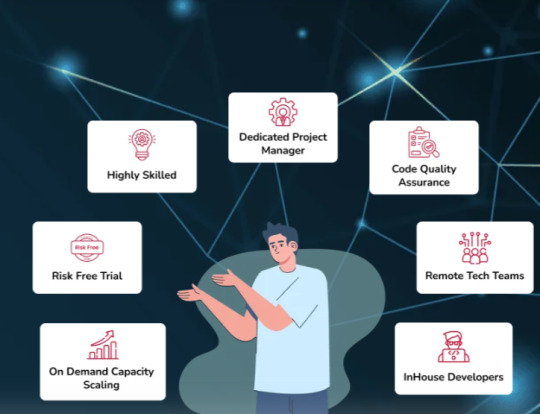
0 notes
Text

0 notes
Text
The Importance of Testing and Debugging in Full Stack Development
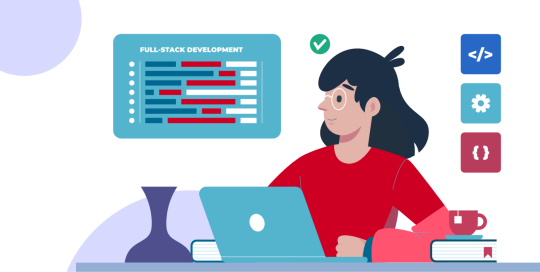
In the rapidly evolving field of software development, it is crucial to ensure that programs are reliable, effective, and easy to use. Full-stack development company handle both the front-end and back-end parts of web applications, which require a great deal of testing and debugging due to their complexity. This blog post will explore why these practices are crucial, the benefits they provide, and best practices to implement them effectively.
The Importance of Testing and Debugging
Ensuring Application Quality
Providing high-quality software requires thorough testing and debugging. Full-stack development combines several technologies and frameworks to create a seamless application. Without rigorous testing, bugs, and issues in any part of the stack—be it the user interface, server-side logic, or database interactions—can lead to a subpar user experience. Testing assists in identifying and fixing these problems before the application is used by end-users.
Enhancing User Experience
User interruptions are kept to a minimum with a thoroughly tested program. Bugs, performance issues, or security vulnerabilities can significantly impact user satisfaction. For instance, a broken feature on the front end can frustrate users, while a back-end issue might cause data loss or crashes. Developers can improve the overall user experience and create reliable applications by investing in extensive testing and debugging.
Reducing Long-Term Costs
Finding and fixing issues early in the development process is significantly less expensive than dealing with them after the product is released. Early detection of bugs allows them to be fixed before they become more serious issues that require more complex solutions.
Key Practices for Effective Testing
Comprehensive Testing Strategies
Full-stack development services require a multi-layered approach to testing. Here are some essential types of testing to consider:
Unit Testing: Focuses on testing specific features or parts of the program. Unit tests are crucial to ensuring that every piece of code operates as intended.
Integration Testing: Confirms that the application's various modules or services operate harmoniously with one another. This is important for checking interactions between front-end and back-end components.
End-to-End Testing: Verifies that the complete application runs properly from beginning to end by simulating actual user scenarios. This type of testing helps identify potential problems from the user's perspective.
Performance Testing: Evaluates the application's performance across a range of scenarios, including significant data loads and high traffic. This ensures that the application can handle the anticipated user load without experiencing noticeable slowdowns.
Automated vs. Manual Testing
Both automated and manual testing have their place in the development process. Automated testing involves using scripts and tools to run tests, which can be especially useful for repetitive tasks and regression testing. In contrast, manual testing requires human testers to interact with the program to identify unexpected behavior and usability issues. A well-rounded strategy that combines both approaches can result in more comprehensive testing. Automated testing can quickly cover a wide range of scenarios, while manual testing can reveal insights into the user experience with the application.
Debugging Best Practices
The process of finding and resolving errors in code is known as debugging. Effective debugging can significantly improve the quality of the application. The following are some recommended practices:
Use Debugging Tools: Modern development offers powerful debugging tools that can help trace errors, set breakpoints, and inspect variables. Tools like Postman for API testing and Chrome DevTools for front-end debugging are extremely helpful.
Log Errors and Monitor Performance: Implementing logging mechanisms can help capture errors and monitor application performance. Tools like Sentry and New Relic provide real-time insights into issues and performance bottlenecks.
Adopt a Methodical Approach: When debugging, systematically isolate and test different parts of the code to identify the root cause of the issue. This approach can help avoid confusion and lead to more efficient problem-solving.
Regular Code Reviews
Code reviews are an essential part of the development process and significantly aid debugging efforts. Code reviews also encourage communication and collaboration among team members.
Conclusion
In full stack web development company, testing and debugging are not just supplementary tasks but critical components of the development process. Effective testing ensures that the application meets quality standards and provides a positive user experience, while thorough debugging addresses issues and improves code reliability.
By implementing comprehensive testing strategies, leveraging both automated and manual testing, and adopting best practices for debugging, development teams can build robust and high-quality applications. Prioritizing these practices will lead to more reliable software and ultimately a better experience for end-users.
0 notes
Text
What are the Challenges of Custom Software Development Projects?
Projects involving the development of custom software are specialized solutions created to fulfill certain company requirements. While these projects offer significant advantages, they also come with unique challenges.
Comprehending these obstacles is essential to effectively managing the development process. We will examine the typical difficulties encountered in custom software development projects in this blog article and offer suggestions for how to resolve them.
Defining Clear Requirements
Clearly stating requirements is one of the main issues in developing custom software. Businesses often have a general idea of what they need but lack detailed specifications, leading to misunderstandings and project delays.
Overcoming the Challenge
Collaborative Workshops: Call frequent meetings to go over issues, review progress, and ensure everyone is aware.
User Stories and Use Cases: Make use of platforms such as Microsoft Teams, Trello, or Slack to support continuous communication and teamwork.
Prototyping: Create prototypes to visualize the final product and refine requirements through feedback and iteration.
Team Collaboration
Effective collaboration among team members is vital for the success of custom software development projects. However, coordinating between different team members, especially in remote or distributed teams, can be challenging.
Overcoming the Challenge
Regular Communication: Schedule regular meetings to discuss progress, address issues, and keep everyone informed.
Collaboration Tools: Utilize tools like Slack, Microsoft Teams, or Trello to facilitate ongoing communication and collaboration.
Clear Roles and Responsibilities: To guarantee responsibility and prevent misunderstandings, clearly define each team member's tasks and responsibilities.
Resource Allocation
In the process of developing custom software, resource allocation is a major difficulty. This includes managing the project budget, time, and human resources effectively.
Overcoming the Challenge
Detailed Planning: Make a thorough project plan that specifies the duties, deadlines, and materials needed.
Buffer Time: Schedule a buffer period to allow for unforeseen problems and delays.
Regular Monitoring: Monitor resource utilization regularly and make adjustments as needed to stay on track.
Testing and Debugging
Ensuring the quality and performance of the software through testing and debugging is crucial but can be time-consuming and complex.
Overcoming the Challenge
Automated Testing: Implement automated testing to quickly identify and address issues.
Continuous Integration: Code updates should be tested and merged on a frequent basis using continuous integration techniques.
Dedicated Testing Team: Assign a dedicated testing team to focus on identifying and resolving issues before the software goes live.
Handling Technological Changes
Keeping up with the newest tools and trends in the ever-evolving world of technology can be difficult. This can affect the development process and the longevity of the software.
Overcoming the Challenge
Continuous Learning: Promote lifelong learning and career advancement for the development team.
Technology Roadmap: To prepare for and predict upcoming technological changes, create a technology roadmap.
Vendor Support: Choose technologies and tools that have strong vendor support and active communities.
Security Concerns
Security is a critical concern in custom software development. Vulnerabilities can lead to data breaches and other security incidents, damaging the business's reputation and finances.
Overcoming the Challenge
Security Audits: Conduct frequent security audits to discover and remediate issues.
Secure Coding Practices: Reduce risks by using secure coding techniques.
Training: Give developers security training so they may stay up to date on the newest risks and best practices.
Real-Life Example: ABC Corporation
ABC Corporation, a mid-sized retail company, faced several of these challenges during their custom software development project. Initially, they struggled with defining clear requirements, leading to scope creep and timeline overruns. By conducting detailed workshops and involving stakeholders in the requirement-gathering process, they were able to clarify their needs and set realistic expectations. Implementing a change control process helped them manage scope effectively, and regular performance testing ensured their software met quality standards. Through continuous communication and the use of collaborative tools, they maintained alignment among all parties, ultimately delivering a successful software solution that enhanced their operational efficiency.
Custom software development projects offer significant benefits but come with a range of challenges. By understanding and addressing these challenges—such as defining clear requirements, managing team collaboration, allocating resources efficiently, ensuring quality through testing and debugging, handling technological changes, and addressing security concerns—businesses can increase their chances of success.
#customsoftwaredevelopment #softwaredevelopment
#Custom software development#web application development#full stack developer#app development#mobile app development#software development
0 notes
Text
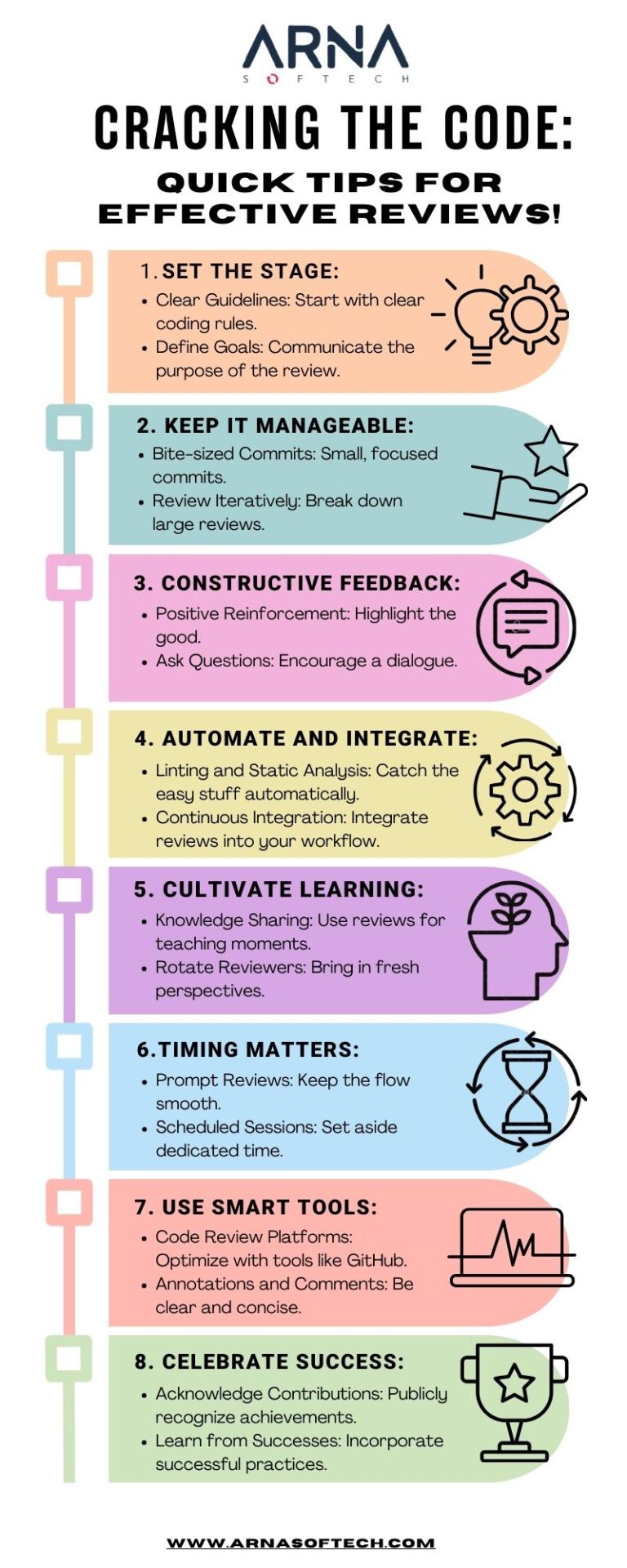
Guide for Code Review- Quick Help For Developer's! Dive into quick tips, best practices, and expert insights to enhance collaboration, catch bugs early, and elevate the overall quality of your codebase. Transform your code review process and set the stage for coding success! Have a look now!
0 notes
Text
4 Essential Chrome Extensions for Coders - Simplify Your Coding! Unlock your coding potential with these 4 essential Chrome extensions. From debugging to productivity tools, these extensions are a coder's best friend. Discover how to maximize your software development experience on Chrome! Explore now!
0 notes
Video
youtube
Training & Data Collection App- Get A Free Quote!
Equip your field workers with the tools they need to excel, streamline workflow, and gather accurate data seamlessly. Enhance communication, maximize performance, and achieve optimal results with our user-friendly app designed to revolutionize your field operations. Check it out now.
0 notes
Text
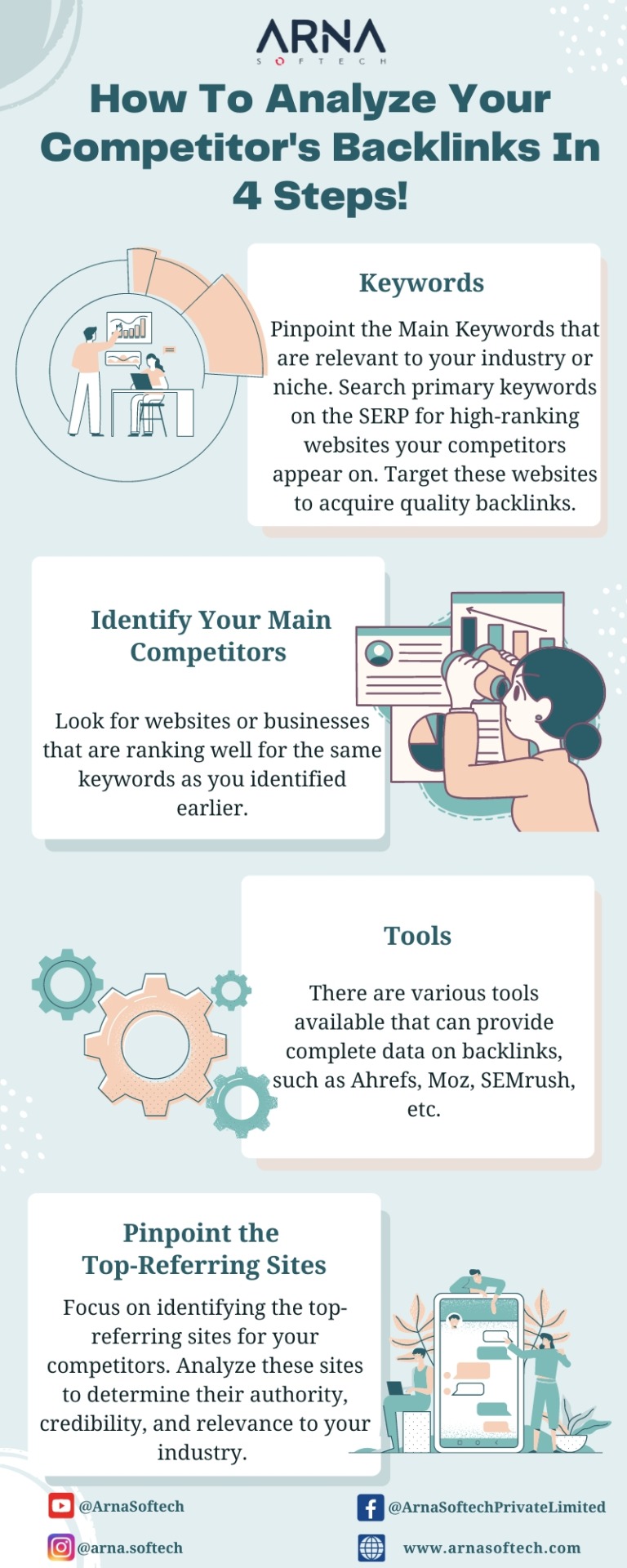
How to Analyze Competitor's Backlinks - Strategies that Work!
Discover proven tactics that work in obtaining valuable backlinks from your competitors. Gain a competitive edge and propel your SEO efforts to new heights. Learn how to uncover and leverage your competitor's backlink sources for maximum impact.
0 notes
Text
What Factors Affect The Cost Of Mobile App Development?
The mobile app has become a lucrative business possibility for many entrepreneurs and businesses. Now, the query is “What is the cost of developing an application?” The answer to this question can vary significantly depending on various aspects of the app such as complexity, features, platform compatibility, design & development time. In this article, we will help you to know various factors that impact the cost of application development, providing you with a complete guide to make you understand the financial implications of creating a mobile app.
Introduction
Mobile applications now become an essential part of our lives to deliver convenience, entertainment, and productivity. With the most increased demand for mobile apps, people and businesses aspire to create their own. Yet, understanding the cost of making an app development is crucial for making notified decisions.
1.Defining App Development Cost Factors
App Complexity
The complexity of an app plays a significant role in determining its cost. A simple app with basic functionality will require less time and resources compared to a feature-rich, complex app. The more attributes, integrations, and customizations added, the higher the development cost.
Design and User Interface
An aesthetically engaging and user-friendly design is crucial for engaging users. The cost of app development improves when detailed design elements, animations, and custom graphics are involved. Additionally, providing a seamless user experience across different devices and platforms can impact the overall cost.
Platform Compatibility
Choosing the platforms for your app, such as iOS, Android, or both, affects the cost. Developing a mobile app for a single platform is may less expensive than building on multiple platforms due to different programming languages and design guidelines.
Features and Functionality
The features and functionality you envision for your app will influence its cost. Advanced features like in-app acquisitions, push notifications, social media integration, and real-time data synchronization need additional development effort and may incur higher prices.
Integration and Third-Party Services
Integrating your app with external services or APIs can enhance its capabilities but may also add to the development costs. Depending on the complexity and compatibility of the integration, additional resources and expertise may be required.
Development Time
The time required to develop an app significantly impacts its cost. Complex apps with numerous features and intricate designs may take longer to develop, leading to higher expenses. Efficient project management and streamlined development processes can help optimize costs without compromising quality.
Maintenance and Updates
Once your app is launched, ongoing upkeep and updates are necessary to assure its smooth functioning, security, and compatibility with new devices and operating systems. Allocating a budget for regular maintenance and updates is vital for long-term success.
2. Estimating App Development Costs
To provide you with a better understanding, we’ll outline three categories of app complexity and estimate their respective development costs. It is essential to note that these categories are general estimates and can vary relying on your specific needs and the development team you choose to work with.
Basic App (Simple Functionality)
A basic app typically includes essential features such as user registration, basic user interface components, simple database integration, and limited functionality. The cost for basic app development can range from $3,000 to $10,000.
Medium Complexity App
A medium-complexity app involves more advanced features, custom design elements, third-party integrations, and a larger database. This type of app may also require backend development and API integrations. The assessed cost for developing a medium-complexity app is between $10,000 and $25,000.
High-End App (Complex Functionality)
A high-end app incorporates intricate designs, complex functionalities, advanced features, real-time data synchronization, extensive backend development, and API integrations. Developing a high-end app requires a team of experienced developers and can cost anywhere from $20,000 to $100,000 or more, depending on the complexity and range of the project.
3. Additional Cost Considerations
App Marketing and Promotion
Building an app is just the first step to reach you out to your audience. To reach your target audience and gain traction, you’ll need to allocate a budget for app marketing and promotion. It includes strategies such as app store optimization, social media marketing, online advertising, and influencer partnerships. The cost of app marketing can vary significantly depending on your goals and chosen marketing channels.
App Maintenance and Support
After launching your app, ongoing maintenance, bug fixes, and customer support are essential to keep it running smoothly. It is crucial to allocate resources for regular updates, addressing user feedback, and ensuring compatibility with new devices and operating system updates. The budget for app maintenance and support will rely on the complexity of your app and the level of support needed.
Conclusion
Creating a mobile app involves various factors that influence its cost. Understanding these factors, such as app complexity, design, platform compatibility, features, development time, and ongoing maintenance, is crucial for budgeting and making informed decisions. You can be considering your app’s needs by working with an experienced development team and can build a successful app within your budget.
View original Source
#app development#Hire Software Developers#arna softech#cost of app development#app maintenance and support#social marketing
0 notes
Video
youtube
Want to Understand User Behavior Better? Discover How to Monitor Button Clicks Using Google Tag Manager! 📲💡
#youtube#GTM#ButtonClickTracking#GoogleAnalytics#ButtonTracking#GoogleAnalyticsGuide#google tag manager#Google#GA4#arnasoftech
0 notes
Video
tumblr
Benefits of AWS: Get the Most from the Cloud!
Explore the benefits of AWS and unleash the full potential of the cloud! From cost saving to improved scalability and reliability, AWS offers a range of advantages for businesses of all size. Let's dive into the world of AWS and discover how it can help you innovate and grow.
0 notes
Photo
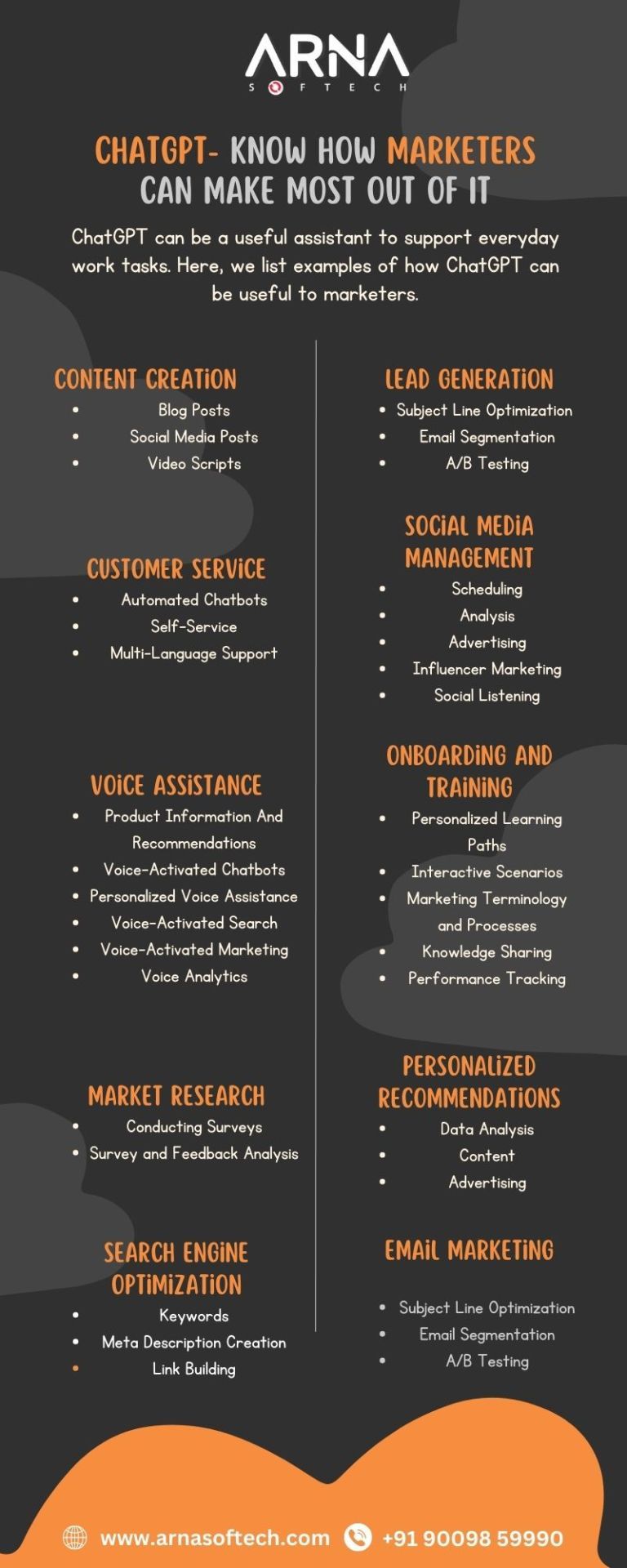
ChatGPT in Marketing- Quick Guide!
ChatGPT can assist you to make your daily task easy. Want to know how? Refer this infographic explaining how chatGPT can be a hands-on tool for marketers.
1 note
·
View note
Photo
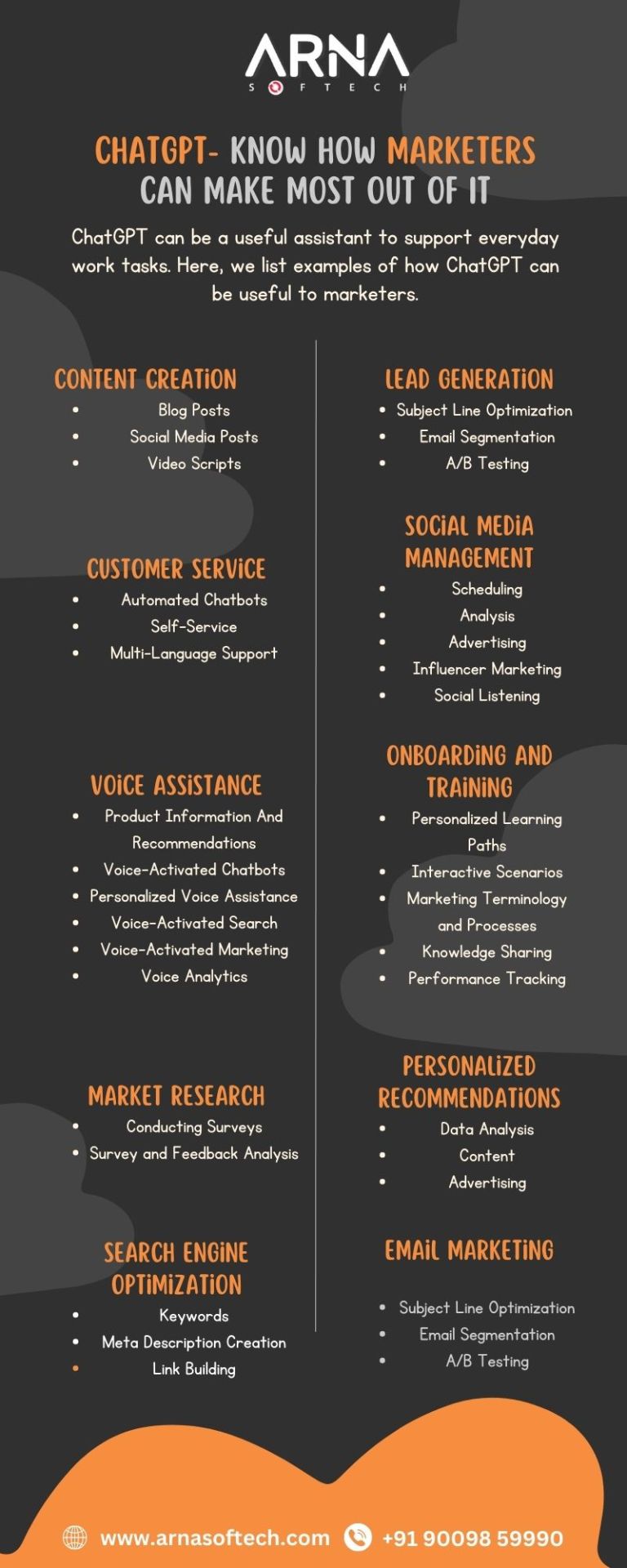
ChatGPT in Marketing- Quick Guide
ChatGPT can assist you to make your daily task easy. Want to know how? Refer this infographic explaining how chatGPT can be a hands on tool for marketers.
0 notes